How To Detect Heavy Metals In Water | 2025 Guide
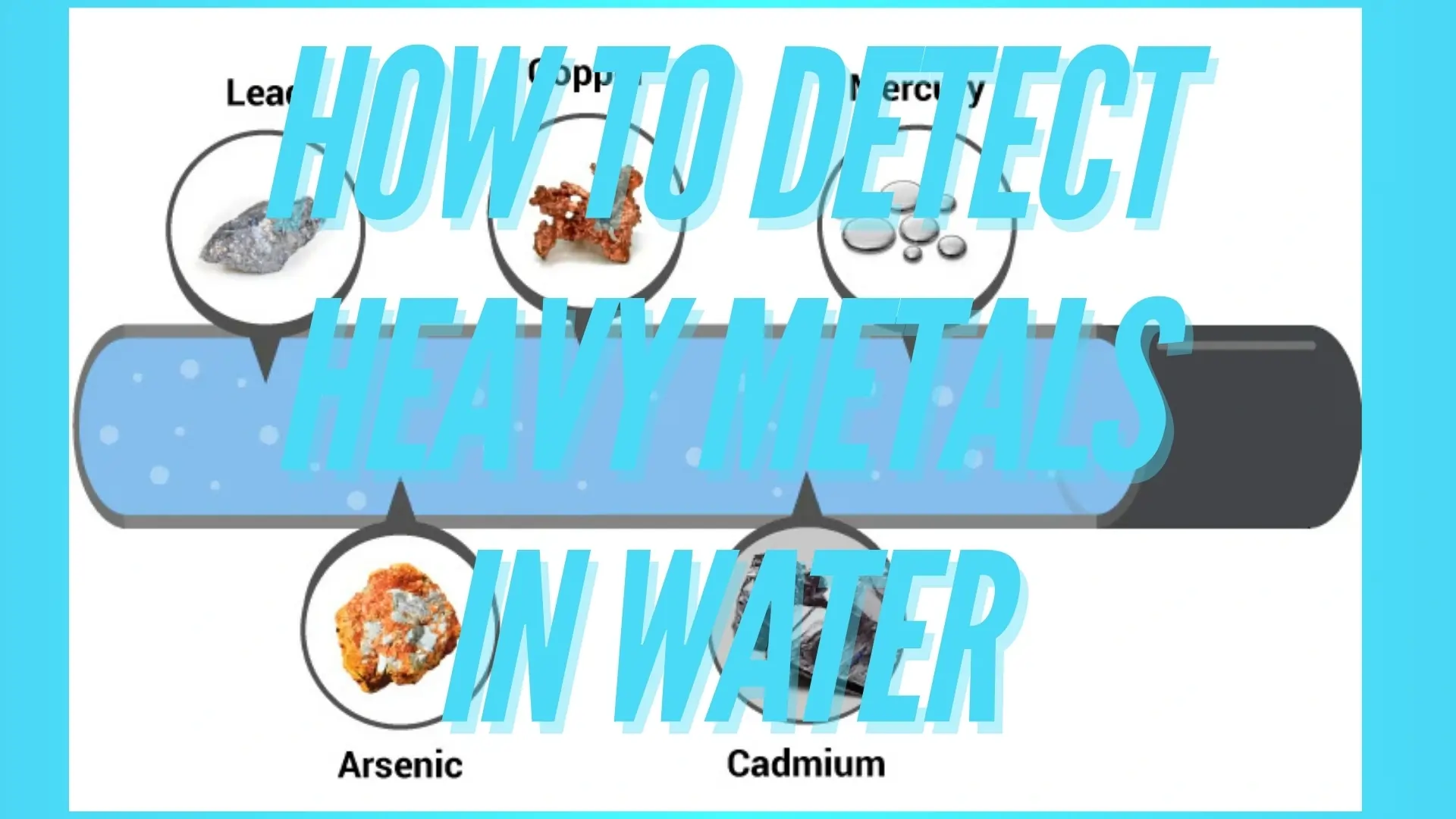
Have you ever wondered how to detect heavy metals in water and make sure your drinking water is safe? Heavy metals, like lead, mercury, arsenic, and cadmium, are toxic substances that can be harmful if they enter drinking water supplies. These metals come from various sources, including industrial waste, mining, and even some agricultural processes. Detecting heavy metals in water is important to ensure its safety for human consumption and environmental health.
Long-term exposure to even small amounts of these metals can lead to serious health problems, including kidney damage, developmental issues in children, and neurological disorders. For this reason, agencies like the Environmental Protection Agency (EPA) have set strict guidelines for maximum contaminant levels of heavy metals in drinking water. However, maintaining these safety levels requires regular monitoring and effective detection methods, especially as urbanization and industrial growth continue to increase.
Testing water for heavy metals has become essential to ensure safe drinking water for households, schools, and communities. While laboratory testing has been the traditional approach, new, accessible testing methods are emerging that allow for quicker detection. In this article, I will guide you through the different techniques to detect heavy metals in water, from simple at-home kits to advanced lab-based procedures, helping to identify which method is best suited for various needs.
Learn What Blocks Metal Detectors From Detecting Them?
A List of Toxic Heavy Metals in Water for Which You Should Test
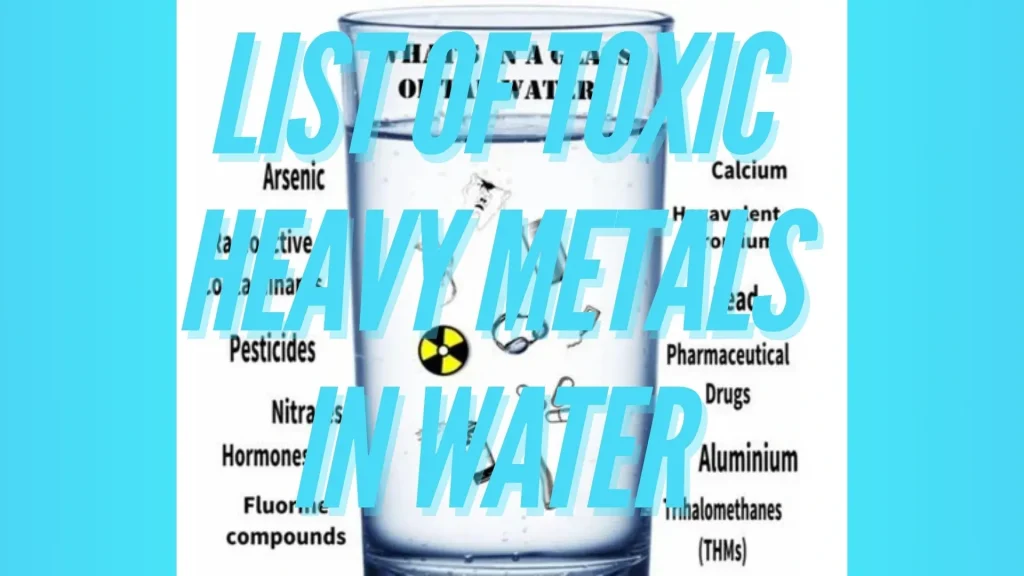
Read my review of the Fisher Gold Bug 2 metal detector.
Arsenic
Found naturally in the earth’s crust, arsenic can enter drinking water through soil and rocks. Industrial processes can also increase arsenic levels, especially in areas with high mining activity. Short-term exposure causes stomach pain, nausea, and vomiting, while long-term exposure can lead to severe issues like heart disease, cancer, and nervous system damage. Testing is essential, especially for private wells, as arsenic levels are often high in certain regions.
Cadmium
Cadmium enters water sources through natural deposits, industrial waste, and used battery recycling. High exposure causes symptoms like vomiting, muscle cramps, and kidney issues. Long-term exposure can damage the liver, kidneys, and bones. Testing for cadmium is especially critical in areas near manufacturing or waste sites.
Chromium
While trivalent chromium (Cr III) is harmless and even essential in small amounts, hexavalent chromium (Cr VI) is toxic. Cr VI can cause cancer and damage to the kidneys and the nervous system. Testing is necessary because while Cr III is often naturally present, Cr VI typically comes from industrial pollution.
Copper
Essential in small amounts, copper can enter water from corroded pipes. However, too much copper causes digestive issues and, over time, damages the liver and kidneys. Copper testing is vital in older homes or those with metal pipes to ensure safe drinking water.
Lead
Lead is among the most dangerous metals, especially for children, causing brain damage, developmental delays, and other severe health problems. It commonly enters water through corroded pipes in older plumbing systems. Since no amount of lead in drinking water is considered safe, regular testing is crucial for households, especially those with children.
Manganese
Naturally present in soil, manganese is essential in small amounts but harmful at high levels, causing problems in the central nervous system. Testing for manganese can confirm if water treatment is needed, particularly in regions with high natural manganese deposits.
Nickel
Nickel exposure through water can cause skin irritation and, in high doses, lead to cancer. Nickel contamination typically comes from industrial activities like mining and smelting. Testing for nickel is recommended in areas with industrial history to ensure safe water.
Mercury
Mercury from volcanic activity, coal burning, and industrial processes often enters water sources. It can cause severe nervous system damage and is particularly dangerous for pregnant women and children. Regular testing is necessary, especially in areas near industrial facilities.
Barium
Found in mineral deposits, barium can also enter water through industrial waste and car part manufacturing. Exposure to barium may lead to high blood pressure, muscle weakness, and damage to organs like the liver and kidneys. Testing for barium is advised for areas near mining or waste sites.
What Are the Effects of Heavy Metals in Water?
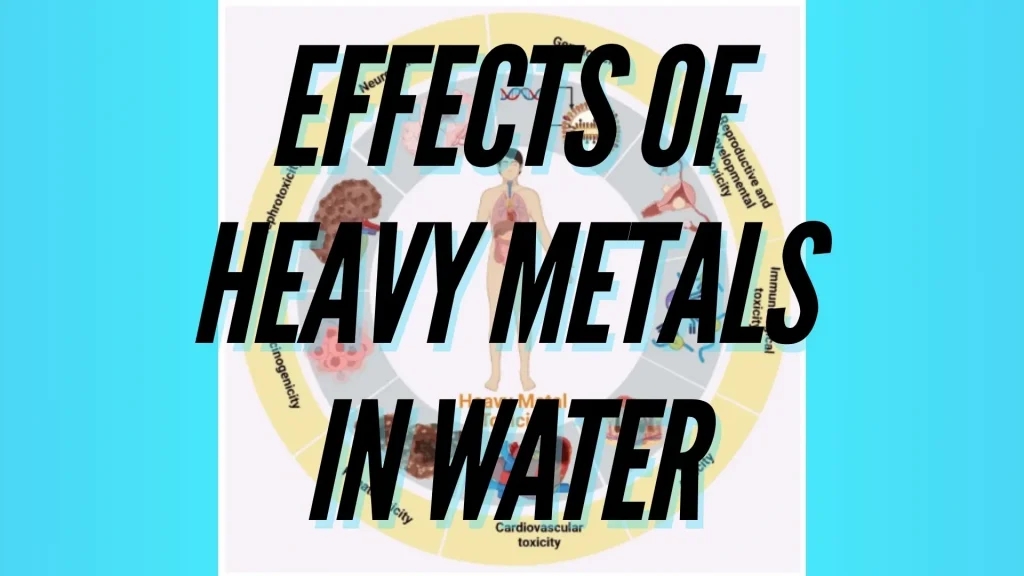
Heavy metals can enter drinking water from several sources, including natural deposits, industrial waste, and even through old plumbing systems. Metals like lead, arsenic, and cadmium may seep into groundwater, surface water, and even runoff, which can contaminate drinking supplies. When pipes start to corrode, they can release metals into the water, raising the risk of exposure.
The effects of heavy metals on human health can be severe, especially for children. Since children’s bodies and brains are still growing, they are particularly sensitive to even small amounts of these toxins, which can cause developmental issues, organ damage, and long-term health complications. Protecting the health of families, employees, and customers from the effects of heavy metals in water should be a top priority.
While it may not be possible to eliminate all sources of heavy metal pollution, regular water testing can help detect heavy metals in water. If unsafe levels are found, it’s crucial to take action, either by purifying the water or addressing the source of contamination. Testing your water is the first step to ensuring a safer environment for everyone.
Read my review of the Fisher Gold Bug Pro.
How to Test for Heavy Metals in Water
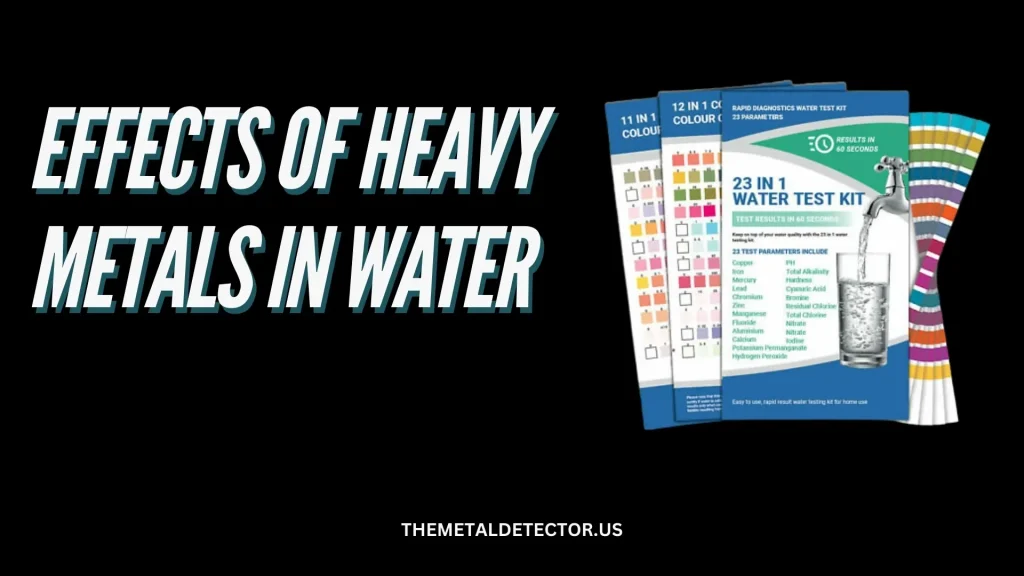
Testing for heavy metals in water is crucial for ensuring water safety. Since heavy metals like lead, mercury, and arsenic are often invisible, tasteless, and odourless, contamination can go unnoticed without proper testing. The first step is deciding between a broad test for various metals or a targeted test if certain contaminants are common in your area. Researching local water quality can help determine which metals to test for, and understanding regional safety standards is also essential.
Home testing kits offer a convenient way to start. These kits typically use test strips treated with chemicals that change colour if specific metals are present. While they are affordable and easy to use, they may lack the accuracy needed for complete safety, as they don’t measure precise metal levels. For those needing more detailed results, contacting a certified environmental lab is the best approach. Labs offer in-depth testing with reliable accuracy, helping you detect heavy metals in water even at low concentrations.
Laboratory testing often uses advanced technology like Atomic Absorption (AA) for single-element analysis, Inductively Coupled Plasma Optical Emission Spectrometry (ICP-OES) for multi-element testing, or Inductively Coupled Plasma Mass Spectrometry (ICP-MS) for greater sensitivity. ICP-MS can also perform speciation analysis to check for specific, toxic forms of elements like arsenic and mercury. With these methods, labs can provide a complete breakdown of metal levels in your water, as well as guidance on any necessary treatment solutions to make your water safe.
Where Can You Go for Heavy Metal Detection in Water?
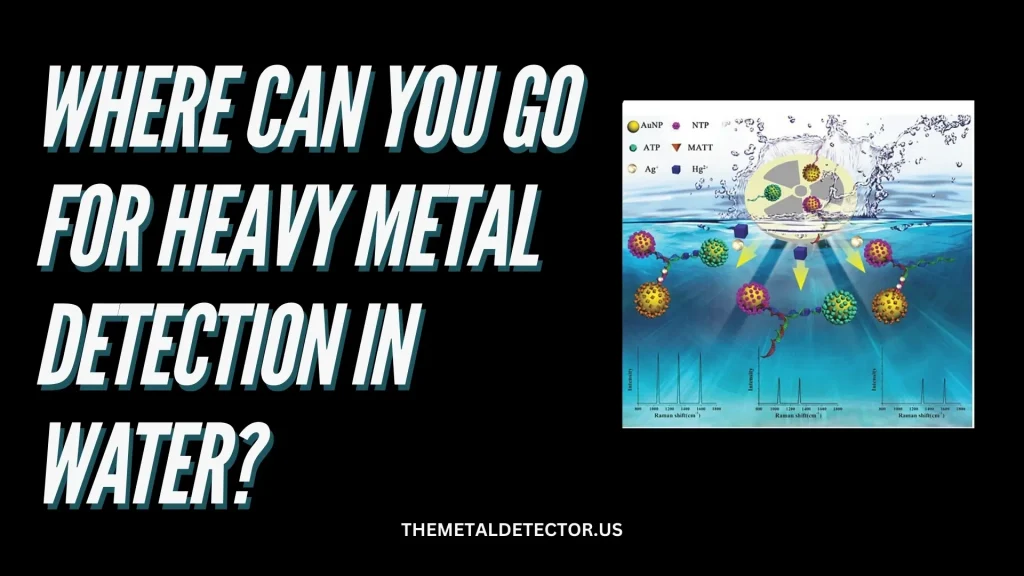
If you want accurate and reliable results to detect heavy metals in water, the best option is to go to a certified and experienced laboratory. One highly recommended choice is Torrent Laboratory, a state-certified lab in California. Torrent Laboratory uses advanced technologies like Inductively Coupled Plasma Mass Spectrometry (ICP-MS) to detect heavy metals in water. This method is particularly effective for testing groundwater, and drinking water, and confirming the presence of specific contaminants at low levels.
Torrent Laboratory is certified by CAL ELAP, DoE ELAP, and DoD ELAP, ensuring compliance with all state and federal standards. The lab employs EPA-approved testing procedures, and every analysis meets the stringent quality control requirements set by California regulatory authorities. Torrent’s team of experienced chemists, with over 150 years of combined expertise, can help your business detect any harmful metals in your water with the highest level of accuracy.
In addition to the detailed reports provided, Torrent Laboratory includes a helpful attachment with Federal Guidelines for water quality, allowing you to compare your water data with established safety standards. Their customer service is highly responsive, so if you have any questions or concerns after receiving your results, they are available to assist you. Whether you’re testing for a known pollutant or want to monitor the overall quality of your water, Torrent Laboratory is a trusted partner in heavy metal detection.
Conclusion (How To Detect Heavy Metals In Water)
Detecting heavy metals in water is crucial for ensuring the safety and health of your family, employees, or customers. Since heavy metals are often odourless, colourless, and tasteless, testing is the only reliable way to know if they’re present in your water. While at-home test kits can provide some answers, sending your water samples to a certified laboratory, like Torrent Laboratory, offers the most accurate and detailed results. With advanced testing methods like ICP-MS, these labs can help you detect heavy metals in water even at trace levels and provide expert analysis. Regular water testing is essential to protect your health and ensure clean, safe drinking water.






